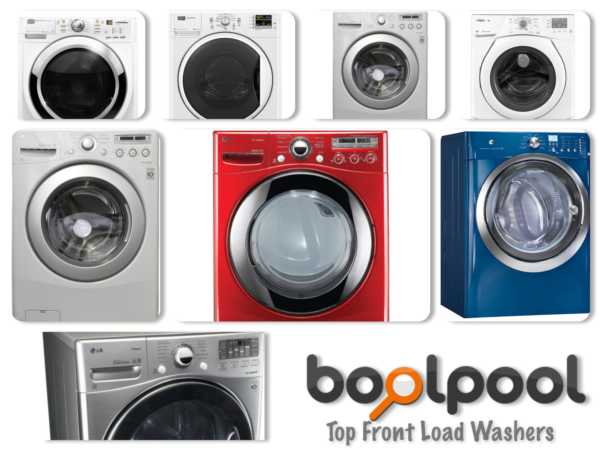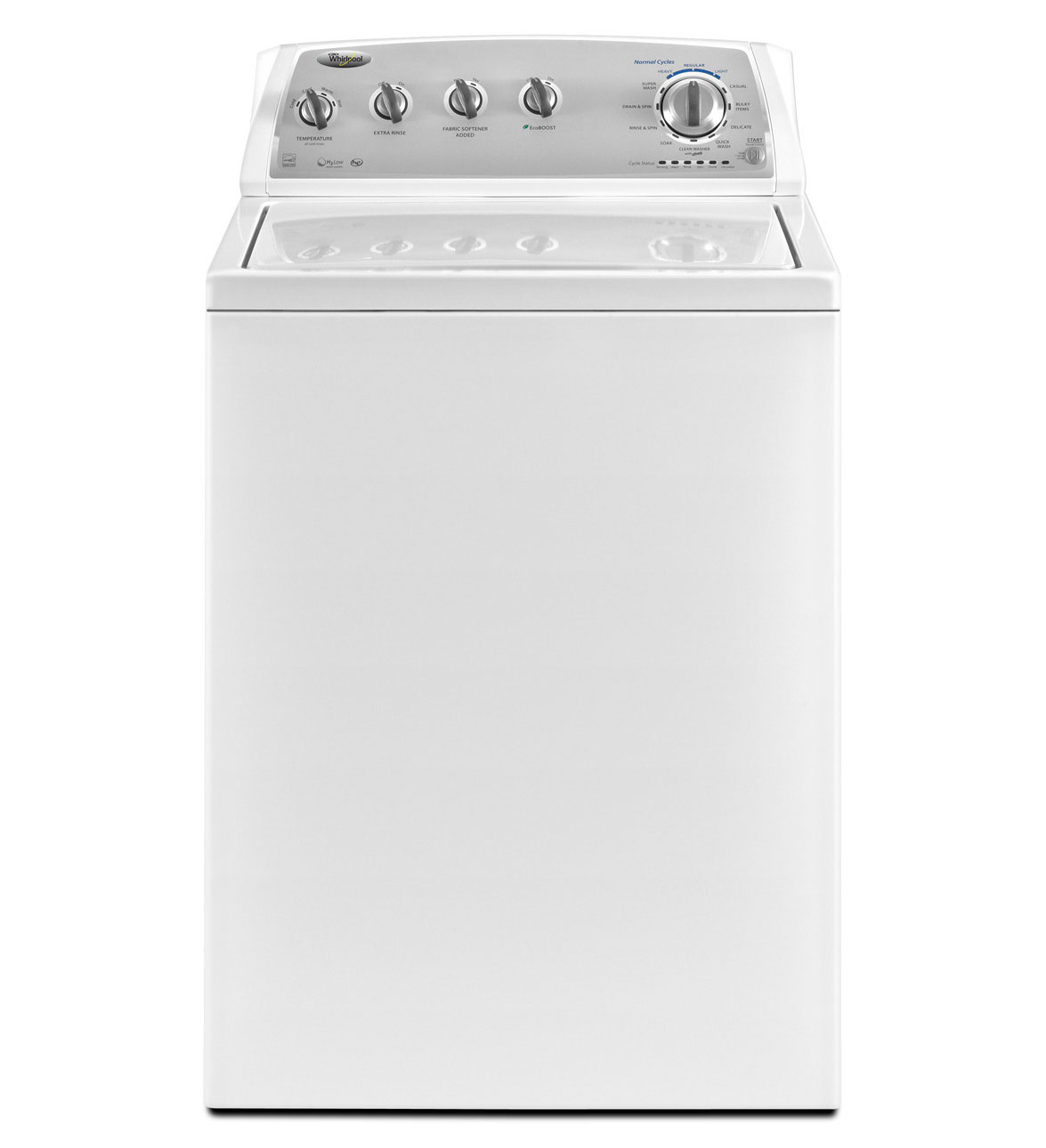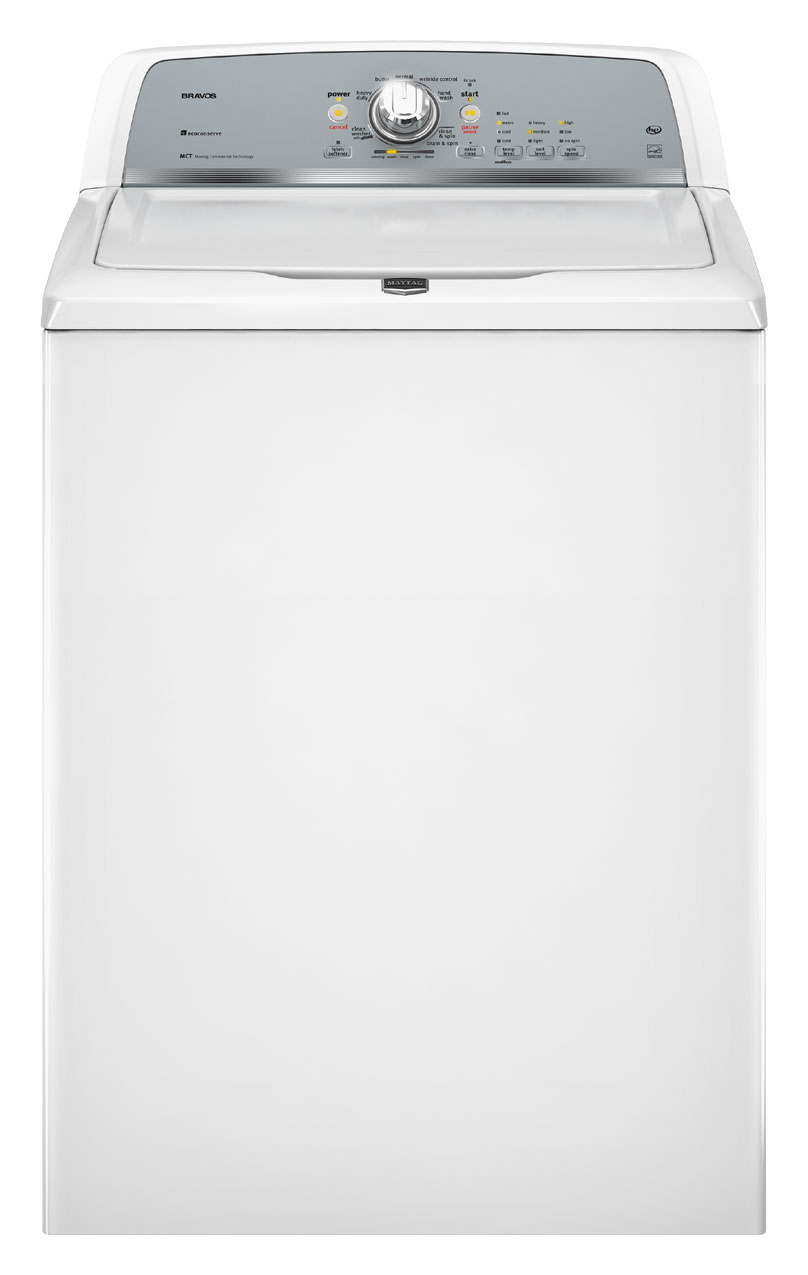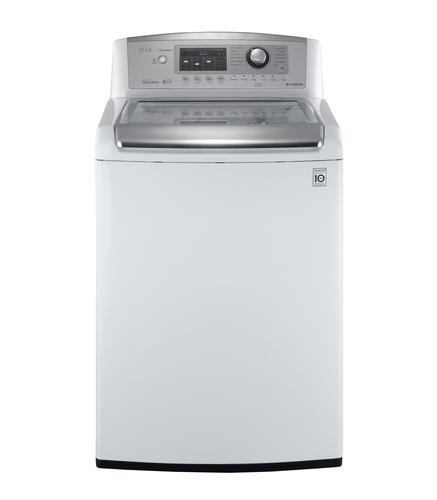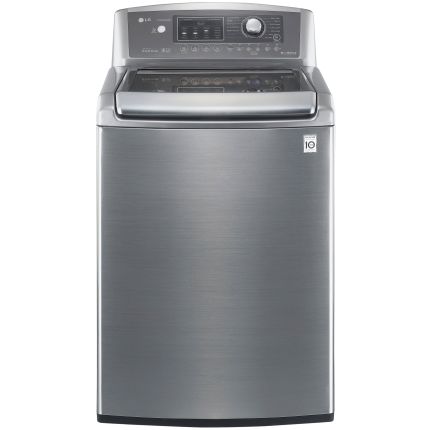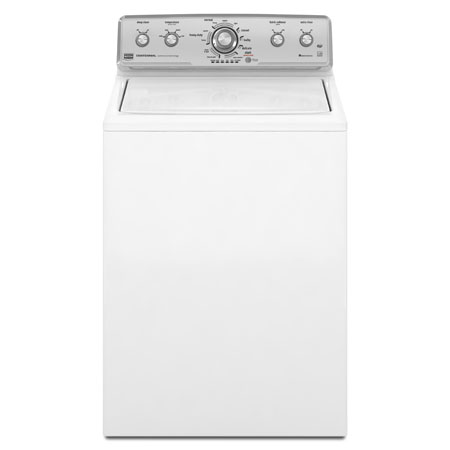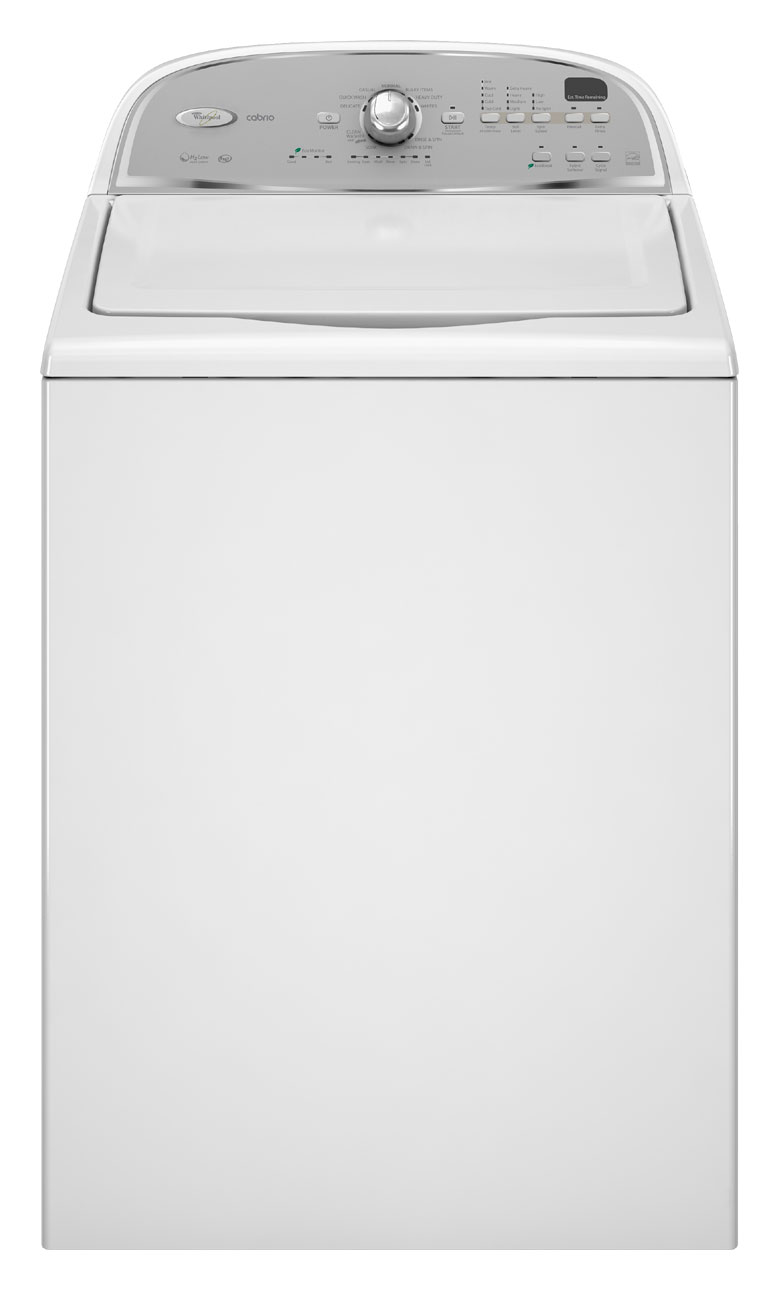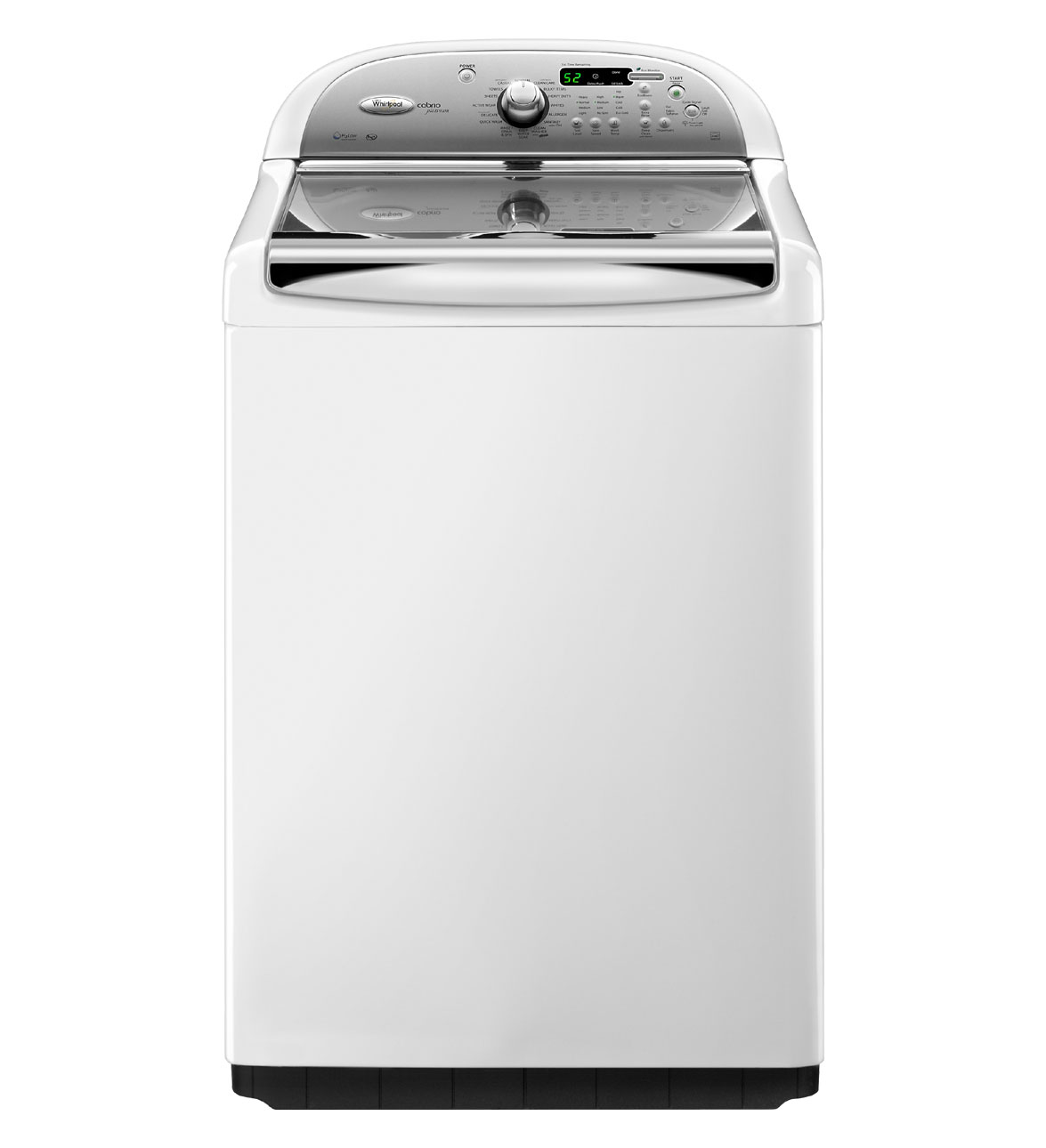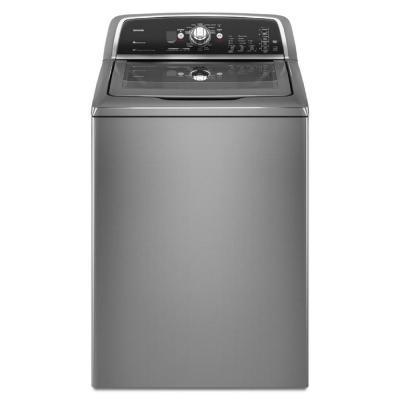| 1 | | 4.50 starsExcellent | - Clothes come out clean, fresh and smelling great
- Spin cycle almost dries clothes by squeezing out most water
- Large capacity; Handles large loads very well
- Easy to use with tons of options and features
- Very quiet operation and stylish looking
- Energy efficient and saves water too
- Extra water heater on board
| - Has quick-action valves that often create 'water hammers' causing water pipes at home to rattle and vibrate
- Don't know actual wash time until after cycle is started
- Long cycles compared to top load washers
| - Clothes come out clean and fresh • Squeezes out most water in the spin cycle
- Easy to use • Very quiet • Stylish looks • Large capacity
- Long cycles compared to top load washers • Cleans well even without bleach • Steam feature is good • Energy efficient • Saves on water bill too
- Users love and highly recommend this washer
- Excellent features and performance • Takes time to understand all the features
- Extra water heater on board • Don't know actual wash time until after cycle is started • Has quick-action valves that often create 'water hammers'
- Uses less water • Comes with great cycle choices • Helps reduce dryer time
- Good looking machine • Manages bulky loads well
| LG Electronics WM3470H(X)A High-Efficiency Front Load Washer comes with LG's revolutionary TurboWash technology that allows you to save 20 minutes on larger loads, with outstanding cleaning performance. It comes in two colors - White and Graphite Steel. The ultra large capacity (4.0 cu.ft.) tub lets you do more laundry in fewer loads thus saving time and energy.See More |
|
| 2 | | 4.50 starsExcellent | - Uses less time and water to do the job
- Quiet and energy efficient
- Does an exceptional job cleaning clothes
- Easy to use with simple directions
- Large capacity and spins clothes dry
- A great product for the price
- Lots of adjustable settings and features
| - It locks and does not spin sometimes
- Long spin cycle
- Tub needs regular cleaning to prevent residue build up
| - Quiet and efficient • Uses less time and water to do the job
- It locks and won't spin sometimes • High spin cycle reduces drying time • Settings have to be manually adjusted everytime
- Easy to use with simple directions • Energy efficient
- Need to 'tub clean' regularly to prevent residue build up • Works well and cleans clothes well
- Saves on water, detergent and money! • Cannot fill the washer with a full load due to the sensor programming • Cold water cycles also washes clothes well
- Has a variety of features • A great product for the price.
- Hand wash cycle treats delicate clothes gently and washes them well • Does an exceptional job cleaning clothes
- Spin cycle is long but very effective • Users love this washing machine
| LG Electronics WM2250CW is a 3.6 DOE cu. ft. High-Efficiency, Extra Large capacity, Front Load Washer with COLDWASH technology. An innovative 6Motion technology does a exceptionally good job of cleaning clothes. Each wash cycle combines up to 6 different wash motions to provide a revolutionary cleaning experience.See More |
| 3 | | 4.50 starsExcellent | - Energy efficient
- Large capacity
- Cleans clothes very well
- Quiet and Durable
- Spin cycle cuts down on drying time
- Lots of great features like 'Fresh Hold' and 'Rapid Wash'
- Stylish design and convenient features
| - May leak sometimes at the door
- The sensor and loads are sometimes off-balance
- Long wash cycles
- A little expensive
| - Spin cycle removes most water cutting down dryer time
- Users are extremely happy with this washer
- Quiet and roomy • Has great features like 'Fresh Hold' option
- 'Rinse and spin' cycle is handy • Barely require 'wrinkle release' cycle while drying
- Washes clothes extremely well • An efficient product that doesn't dissappoint.
- Highly recommended!
- Cleans really dirty clothes very well!
- Has a large capacity • Energy efficient
| The Maytag Maxima MHW6000XW High-Efficiency Front-Load Washer works hard to get huge loads of really dirty clothes clean: quietly and efficiently. This Maytag Maxima 6000 washer offers a total of 11 wash cycles and 6 options which can be combined to create the ideal cycles for a wide variety of load types. This product comes with a 16-hour "Fresh Hold" option that keeps clothes left in the washer fresh.See More |
|
| 4 | | 4.40 starsVery Good | - Easy to maintain and use; Quiet
- Economical and energy effficient
- Uses very less water, electricity and soap
- Clothes come out spotless and smelling great
- Lot of great features and wash cycles
- Steam and Sanitary cycles are great additions
- Washes well in every temperature
| - Sometimes water is left in the dispenser after the cycle is complete
- Some washing cycles are long
- Too many wash options can be confusing
- For small spaces reversible doors would help more
| - The Washer/Dryer set exceeds expectations • Home Depot home delivery and customer service is great!
- With minimal water and soap usage clothes come out spotless • Has a great steam wash cycle • Washes well in every temperature
- Clothes come out clean, well spun and almost dry
- Economical and energy efficient • Quiet • Out performs other brands hands down with many varied features
- Several wash options to choose from • Some washing cycles are long but worth it
- Wild cherry red washer looks good • Saves a lot of water, electricity and laundry detergent • Clothes come out smelling great
- Steam cycle is really good • There is always water left in the dispenser after the work is done • Finishes each cycle in style by playing a musical note
- Easy to maintain and use • Sanitary setting is very nice feature
| LG Electronics 3.6 DOE cu. ft. High-Efficiency Front Load Steam Washer comes in 2 great colors - White and Wild Cherry Red. This washer has 9 Wash Cycles including Sanitary and Steam wash options. The 200 lb appliance is easy on the eyes and, also easy to maintain and use.See More |
| 5 | | 4.20 starsVery Good | - Cleans and sanitizes clothes well
- High spin cycle dries clothes
- Large capacity stainless steel wash drum
- Uses less water and energy efficient
- Quiet and less vibration
- Reversible door; Opens and closes with a light touch
- Has a 10 minutes fast wash cycle
| - Clothes may come out a little wrinkled
- Hard to close door after sometime
- A bit expensive
| - High spin cycle takes out most of the water • Cleans and sanitizes clothes well
- The extended warranty is a good investment for this product.
- Users love this washer • Large drum capacity.
- Uses less water • Option to clean the drum after every cycle • Always retains a clean smell
- Door can be reversed to match with dryer • Door settings make transfer of clothes from washer to dryer easier • Need to use close button gently to close the door • Quiet to open and close the door
- Easy to use • Highly recommended by users
| The Electrolux 4.2 cu. ft. Front Load Steam Washer (IQ-Touch Control Model in Island White and Mediterranean Blue) is a very quiet machine with 11 wash cycles including Sanitize and Perfect Steam options. Boasting of a 4.2 cu. ft. stainless steel drum, this roomy washer not only sanitizes dirty socks but also handles huge king comforters. Most of the cycles finish their rotations within half an hour and the clothes come out spotless.See More |
| 6 | | 3.80 starsGood | - Clothes come out fresh and clean
- Good capacity
- Adjustable and effective spin cycle reduces the drying time
- Energy efficient and uses less water
- Easy to operate with great features
- Reasonable price and value for money
- Looks stylish
| - Long cycles
- In few cases, broke down after few months
- No permanent press cycle; clothes come out wrinkled
- Doesn't balance itself on the final spin
- Not suitable for 2nd floor installation
| - Can adjust the spin speed on almost every cycle • Spin cycle can be loud • Long wash cycles
- Good capacity • Clothes come out fresh and clean • Quiet unit • Extracts lot of water from the clothes reducing dryer time
- In few cases, broke down after few months
- This washer consumes minimal water reducing water bill • Easy to operate with great features • Looks stylish
- Can wash large bulky items well • Loading laundry in it is easy
- Rinse and refresh cycle - a welcome feature • No permanent press cycle so clothes come out a little wrinkled
- Energy efficient and environment friendly • Value for money
- Doesn't balance itself on the final spin • Reasonable price
| The Maytag Performance Series MHWE201YW is a 3.5.cu.ft. high-efficiency and affordable Front Load Washer. This washing machine is energy efficient and also reduces water bill considerably by using less water to wash large loads of dirty laundry. It cleans the garments well and they always come out fresh and smelling good.See More |
| 7 | | 3.80 starsGood | - Energy efficient and uses less water
- Good performance and washes clothes well
- Easy to use with convenient features
- High capacity
- High spin cycle removes excess water; reduces drying time
- Has a great 'Tumble Fresh' option
- Looks stylish
| - Water stays in the rubber seal and molds
- Cycle timer isn't accurate
- Machine may leave bubbles after wash/rinse cycle
- May get unbalanced while washing or spinning
- Long wash cycles
- May not spin the water out of big loads effectively
| - Uses less water • Energy efficient • Water stays in the rubber seal and molds • Water seal for the tub bearings is prone to developing leaks
- Broke down after few months in some cases
- Washes clothes well • Takes a long time to wash a load • Some people find it loud
- Has a great 'tumble fresh' option • High spin cycle removes excess water reducing drying time
- May become unbalanced • Sometimes may need extra rinse cycle to properly rinse the clothes • High capacity
- Won't spin the water out of big loads effectively • Fast spin cycle is loud
- Cycle timer isn't accurate • Machine constantly leaves bubbles after wash/extra rinse cycle
- Better than top load machines • Does a good job of cleaning clothes
| The Whirlpool Duet WFW9151YW is a High-Efficiency Front Load Washer that comes with a variety of features and 12 wash cycles. This 3.5 cu. ft. capacity washer Is ENERGY STAR qualified and rated CEE Tier 31 to help conserve water and energy resources and save a bundle on water and energy costs over the life of the washer. This machine is better than top load machines and provides great cleaning and gentle performance.See More |
| 8 | | 3.30 starsGood | - Cleans clothes well
- Energy efficient; Uses less water
- Huge capacity; Great for big loads
- Quiet operation and easy to use
- Lots of cycles and features including steam, sanitize and handwash options
- Powerful spin cycle cuts down on drying time
- Good value for money
| - Non-reliable; Breaks down frequently
- Bearings and spindle problems are common
- Poor after-sales service
- Poor availability of spare parts even under warranty
- Repairs are expensive
- Shakes violently during spin cycle
| - Clothes come out clean and looking great • Cleans even grease out of work clothes
- Bearings and spindle problems • Some users disappointed with Maytag after-sales service
- Large capacity • Cuts down on number of loads • Good sanitize option
- Quiet • Good value for the price with favorable features • Easy to use
- Powerful spin cycle cuts down on drying time • Lots of different cycles to choose from
- Cleans delicates/handwashables beautifully • Energy efficient • Uses minimal detergent and water
- Tub bearing failure a common problem • Poor availability of spare parts even under warranty • Repairs are expensive
- Not dependable • Breaks down frequently
| The Maytag Performance MHWE950WW 3.9 cu ft High-Efficiency Front-Load Washer hits all the right notes from the word go. The huge drum capacity can hold and wash even a king sized mattress pad with ease! This also helps cut down the number of loads of clothes...giving you more time to play 'match your socks' game with your toddler!This energy efficient washer reduces your detergent and water usage, so maybe those saved pennies can go toward a well-earned back massage!See More |





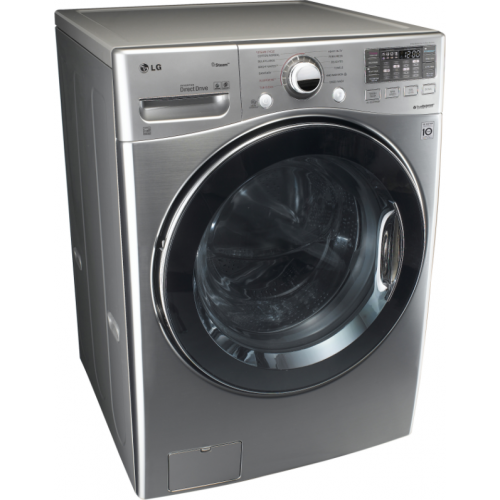 LG Electronics 4.0 cu.ft. High-Efficiency Front Load Washer ENERGY STAR (Model: WM3470HVA and WM3470HWA)
LG Electronics 4.0 cu.ft. High-Efficiency Front Load Washer ENERGY STAR (Model: WM3470HVA and WM3470HWA)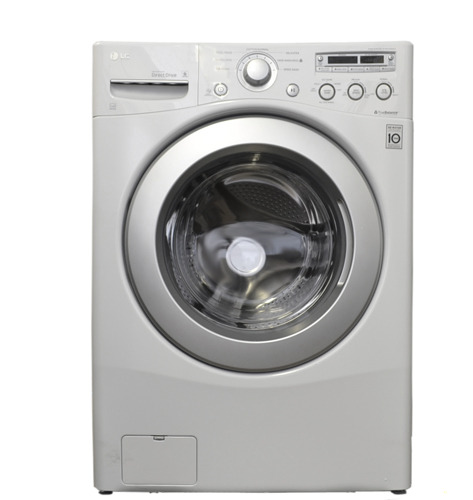 LG Electronics 3.6 DOE cu. ft. High-Efficiency Front Load Washer in White, ENERGY STAR (Model: WM2250CW)
LG Electronics 3.6 DOE cu. ft. High-Efficiency Front Load Washer in White, ENERGY STAR (Model: WM2250CW)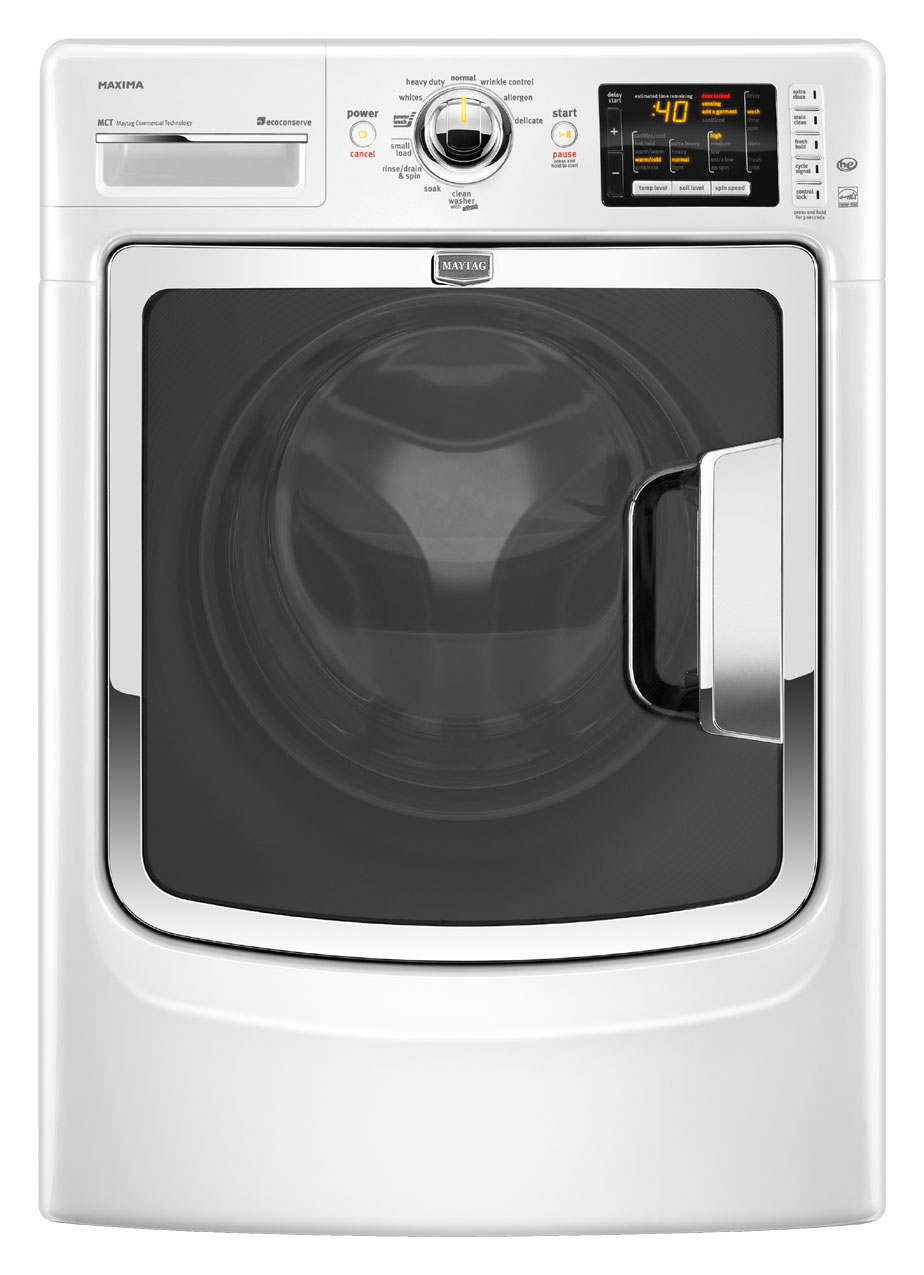 Maytag Maxima 4.3 cu ft High-Efficiency Front-Load Washer (Model: MHW6000XW)
Maytag Maxima 4.3 cu ft High-Efficiency Front-Load Washer (Model: MHW6000XW) LG Electronics 3.6 DOE cu. ft. High-Efficiency Front Load Steam Washer in White and Wild Cherry Red (Models-WM2650HWA and WM2650HRA)
LG Electronics 3.6 DOE cu. ft. High-Efficiency Front Load Steam Washer in White and Wild Cherry Red (Models-WM2650HWA and WM2650HRA)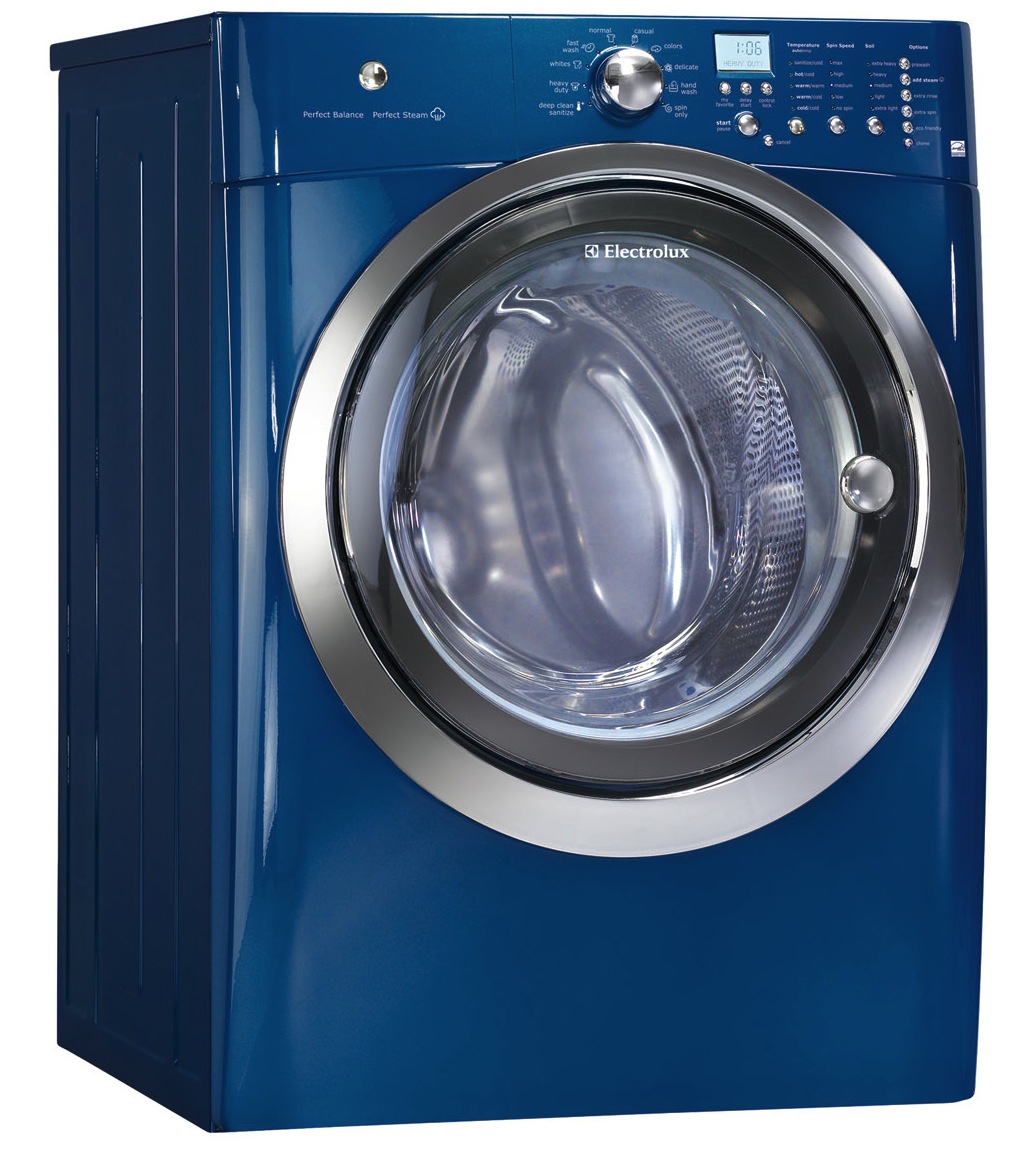 Electrolux 4.2 cu. ft. Front Load Steam Washer - IQ-Touch Control Model: EIFLS55IIW (Island White) and EIFLS55IMB (Mediterranean Blue)
Electrolux 4.2 cu. ft. Front Load Steam Washer - IQ-Touch Control Model: EIFLS55IIW (Island White) and EIFLS55IMB (Mediterranean Blue)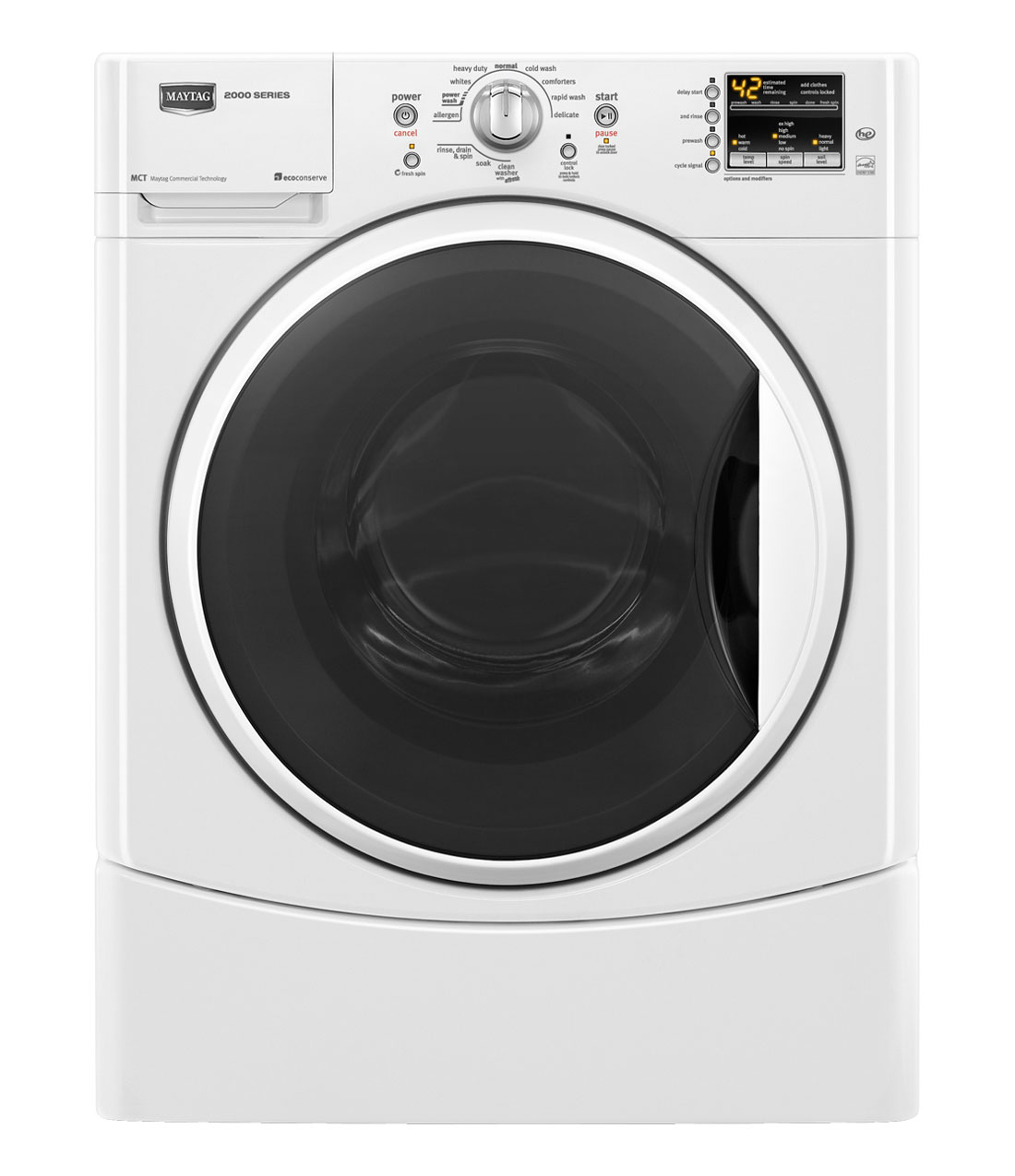 Maytag Performance 3.5 cu ft High-Efficiency Front-Load Washers (White) ENERGY STAR (Model: MHWE201YW)
Maytag Performance 3.5 cu ft High-Efficiency Front-Load Washers (White) ENERGY STAR (Model: MHWE201YW)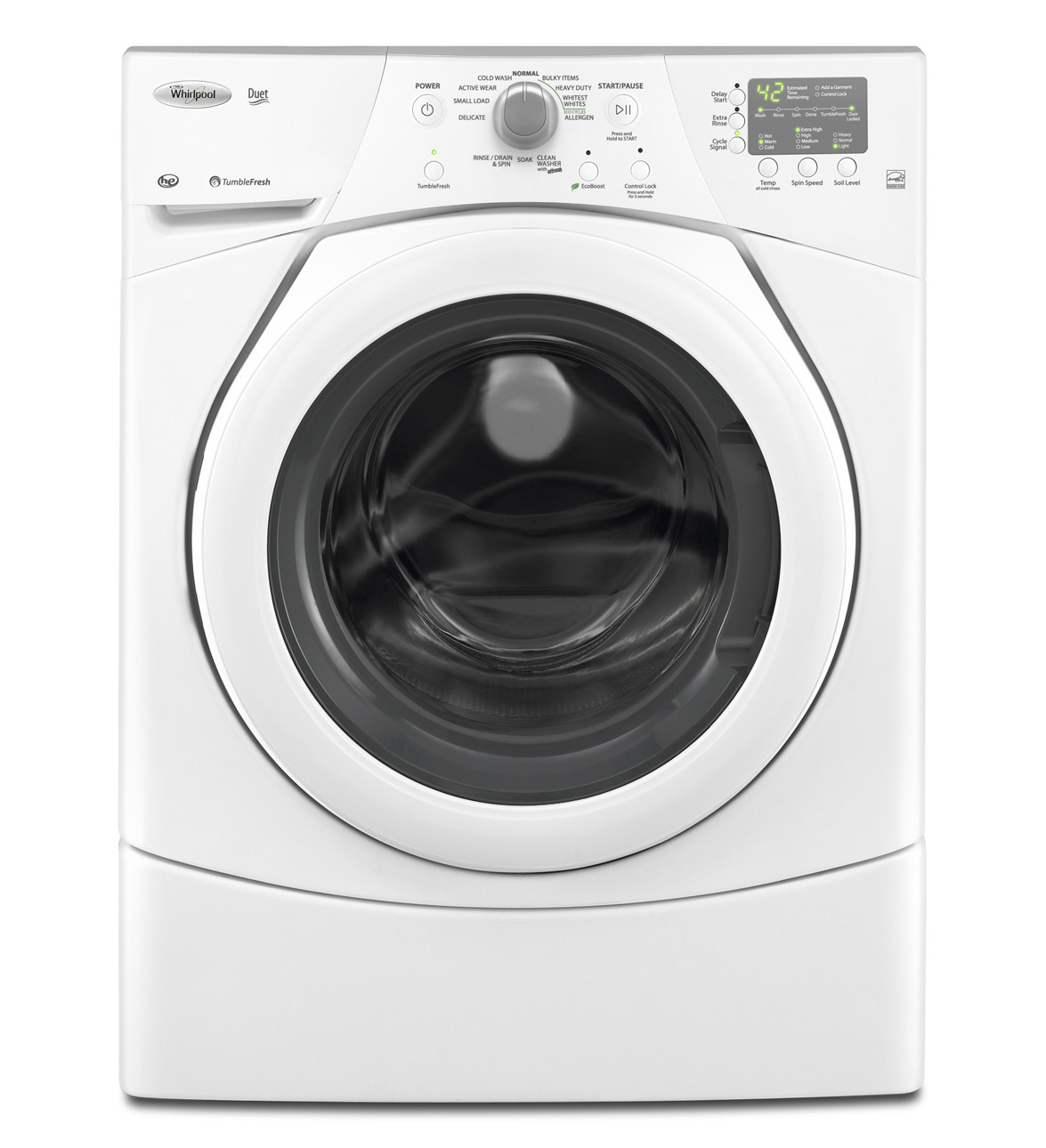 Whirlpool Duet 3.5 cu. ft. High-Efficiency Front Load Washer in White (Model: WFW9151YW)
Whirlpool Duet 3.5 cu. ft. High-Efficiency Front Load Washer in White (Model: WFW9151YW)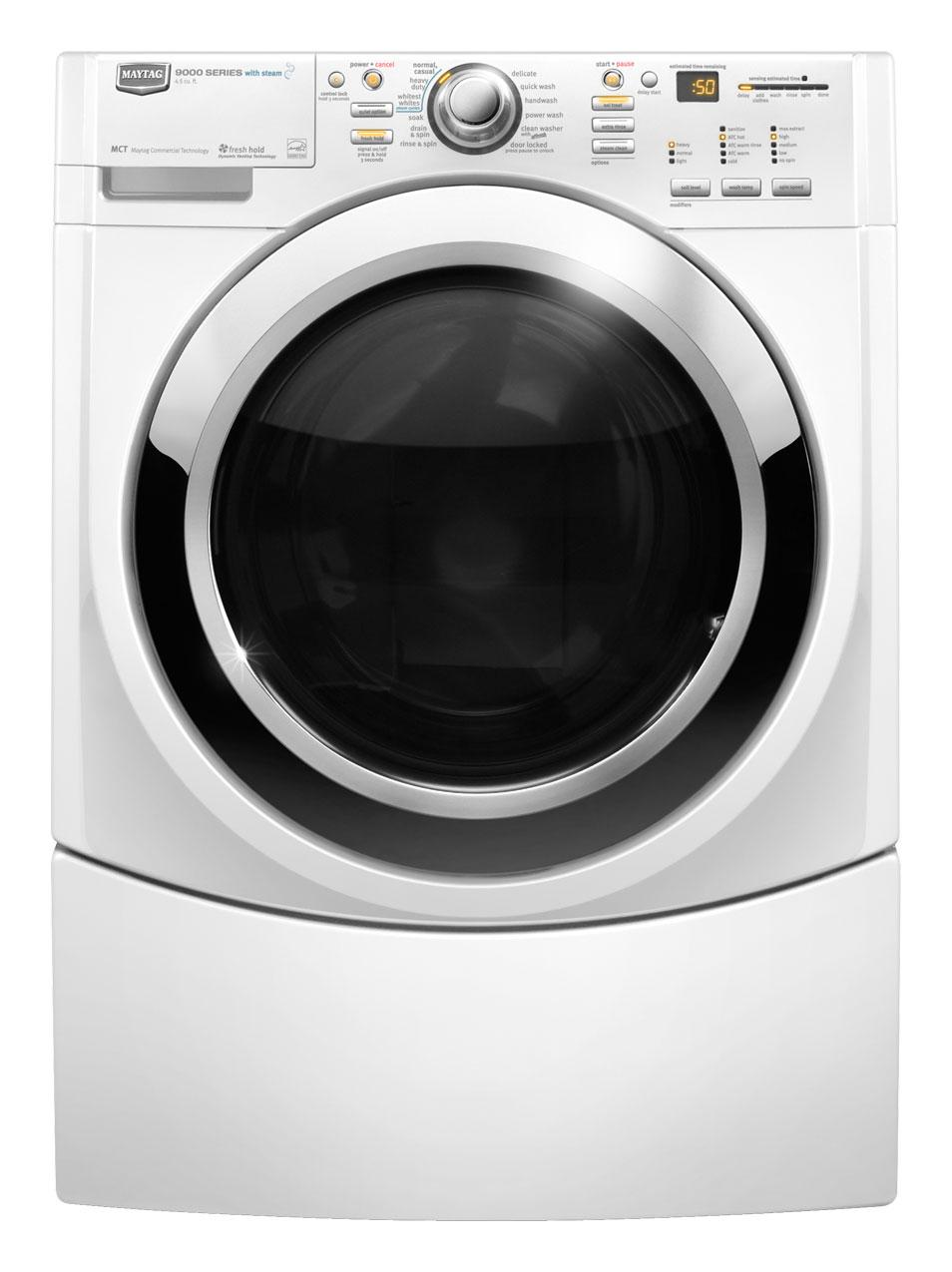 Maytag Performance 3.9 cu ft High-Efficiency Front-Load Washers (White) ENERGY STAR (Model #: MHWE950WW)
Maytag Performance 3.9 cu ft High-Efficiency Front-Load Washers (White) ENERGY STAR (Model #: MHWE950WW)